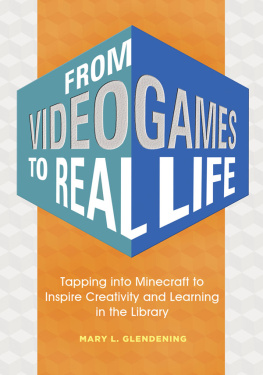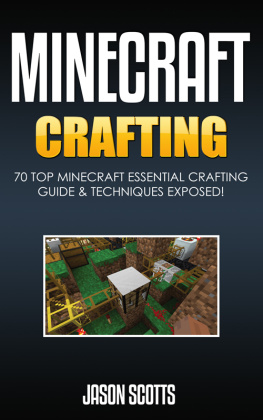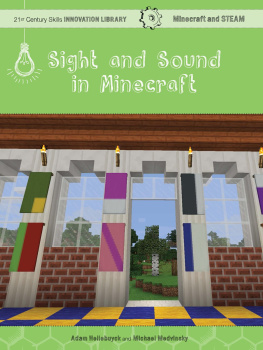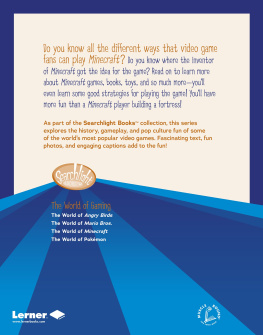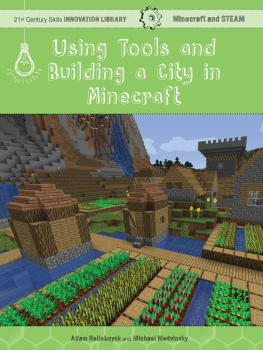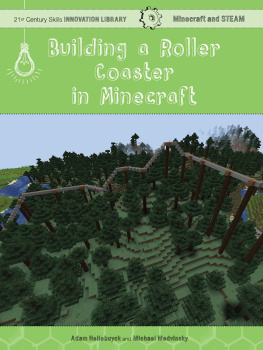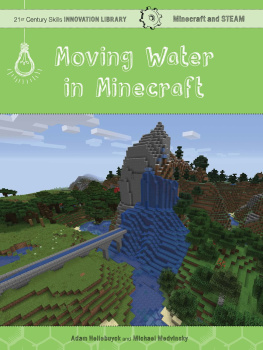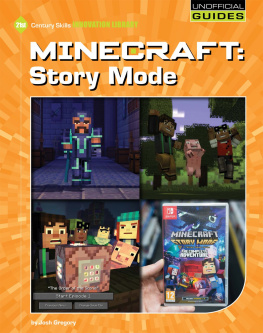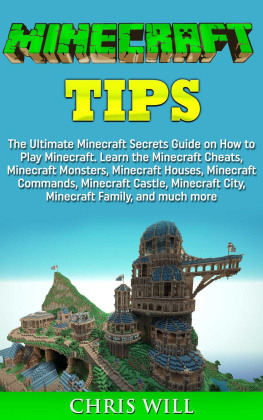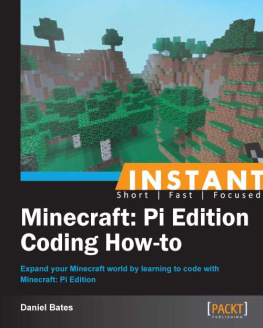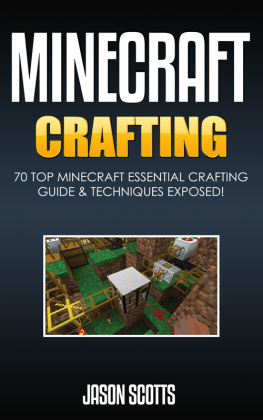From Video Games to Real Life
From Video Games to Real Life
Tapping into Minecraft to Inspire
Creativity and Learning in the Library
MARY L. GLENDENING

Copyright 2016 by ABC-CLIO, LLC
All rights reserved. No part of this publication may be reproduced, stored in a retrieval system, or transmitted, in any form or by any means, electronic, mechanical, photocopying, recording, or otherwise, except for the inclusion of brief quotations in a review, without prior permission in writing from the publisher.
Library of Congress Cataloging-in-Publication Data
Names: Glendening, Mary L.
Title: From video games to real life : tapping into Minecraft to inspire creativity and
learning in the library / Mary L. Glendening.
Description: Santa Barbara, CA : Libraries Unlimited, [2016] | Includes bibliographical
references and index.
Identifiers: LCCN 2016029503 (print) | LCCN 2016036802 (ebook) | ISBN 9781440843785
(pbk : acid-free paper) | ISBN 9781440843792 (ebook)
Subjects: LCSH: Childrens librariesActivity programs. | Young adults libraries
Activity programs. | LibrariesSpecial collectionsVideo games. | Minecraft (Game) |
Video games in education. | Maker movement in education.
Classification: LCC Z718.3 .G58 2016 (print) | LCC Z718.3 (ebook) | DDC 027.62/5dc23
LC record available at https://lccn.loc.gov/2016029503
ISBN: 978-1-4408-4378-5
EISBN: 978-1-4408-4379-2
201918171612345
This book is also available as an eBook.
Libraries Unlimited
An Imprint of ABC-CLIO, LLC
ABC-CLIO, LLC
130 Cremona Drive, P.O. Box 1911
Santa Barbara, California 93116-1911
www.abc-clio.com
This book is printed on acid-free paper 
Manufactured in the United States of America
NOT AN OFFICIAL MINECRAFT PRODUCT. NOT APPROVED
BY OR ASSOCIATED WITH MOJANG.
The publisher has done its best to make sure the instructions and/or recipes in this book are correct. However, users should apply judgment and experience when preparing recipes, especially parents and teachers working with young people. The publisher accepts no responsibility for the outcome of any recipe included in this volume and assumes no liability for, and is released by readers from, any injury or damage resulting from the strict adherence to, or deviation from, the directions and/or recipes herein. The publisher is not responsible for any readers specific health or allergy needs that may require medical supervision or for any adverse reactions to the recipes contained in this book. All yields are approximations.
I would like to dedicate this book to my dear friend Ann Dougherty. Ann was an inspiration to those whose lives she touched. She was a cheerleader, friend, and inspiration.
I would also like to dedicate this to my husband Isaac, whose encouraging words and support kept me going through this project, and my son Jimmy, whose love of Minecraft inspired me to create the Minecraft in Real Life Club. Hes taught me just about everything I know about the game.
Contents
We live in a world dominated by screens. iPads are being given out to students at schools, smartphones are everywhere, and many people have a screen of some kind in just about every room of their house. Screens are so prevalent, even among very young children, that the American Academy of Pediatrics have recently changed their no screens before age 2 and a limit of 2 hours a day for older children recommendations to a more practical approach that recognizes the amount of screens present in the lives of children at home and at school. According to a study conducted by Common Sense Media, tweens aged 812 years spend an average of about 4 hours a day with screen media, and this is not inclusive of any time spent working on school-related tasks (Common Sense Media 2015). Even in the library, we struggle to find that balance between keeping up with technology and staying relevant, while still keeping to our core mission of literacy and education. Like parents, librarians are struggling with the idea of screen time and how to balance it in their work. At the same time, parents are looking to engage their kids in activities where screens are not the focus, and many of those parents are turning to libraries to provide this kind of activity.
So, what do you do and how do you walk the line between not enough technology and too much technology? How can you please those parents who are looking to limit their childrens screen time with meeting the needs of families who may not have access to high-speed Internet and technology in their homes? Further, since most of this time spent with screens is as consumers rather than creators, when you bring screen time into your programs, how do you do it in a meaningful way?
This is where the activities presented in this book come in. What if you could tap into something that kids are fanatical about in a way that does not have to rely on technology? What if you could use this interest to engage learning in a meaningful but fun way? And, when you bring screens into the program, is the engagement as a creator rather than consumer? The open-ended nature of Minecraft and the love kids have for this game make it the perfect tool for bringing hands-on learning activities to your library that can introduce a variety of subjects in a fun way that develops 21st-century skills growing kids into creators rather than merely consumers.
Minecraft in Real Life is about using Minecraft as a jumping-off point to creating hands-on projects and activities, to engage young library users in learning and inspire their creativity. There has been much written about using Minecraft as a tool for learning, but many of these works focus on using in-game activities as the entry point to the learning experience. While there is nothing wrong with this approach, there are obstacles that many librarians face in bringing this kind of activity to the library. Some of us face opposition from library boards or administration that do not see the value of video games, never mind creating programming around gameplay. Others may face financial and technological obstacles that make offering a program reliant on computers and Internet connectivity out of the reach for their location. Lack of comfort with technology or not having the background necessary to set up a server is yet another obstacle standing in the way of bringing Minecraft gameplay to the library setting. While these may be obstacles that you can overcome, it can often be a difficult, slow, and time-consuming process. Why go down this path when there is another way to use Minecraft in the library that gets kids creating, thinking, and learning?
This book provides ideas for programs and activities that can be used in a variety of library settings. Many of the activities can be scaled to your setting, budget, and comfort level. While some of the activities are similar to things you may already do in your library, others will be new, introducing you to new areas of exploration and learning. As you grow your own skills and knowledge base, you can introduce more advanced activities to your group. If you find that many of the kids attend on a regular basis, they will also be growing their skills and looking to work on more advanced projects.
Before Minecraft in Real Life activities are introduced, take a look at the reasons why hands-on, project-based activities are a good fit not only for library programming, but also the benefits this type of programming offers. The opening chapters of this book take a brief look at the Maker Movement, 21st-century learning skills as they pertain particularly to the library setting, and why Minecraft is the perfect tool for building these skills. The following chapters describe a variety of activities from 3D printing to literacy activities to more traditional craft projects that you can easily implement in your library.

